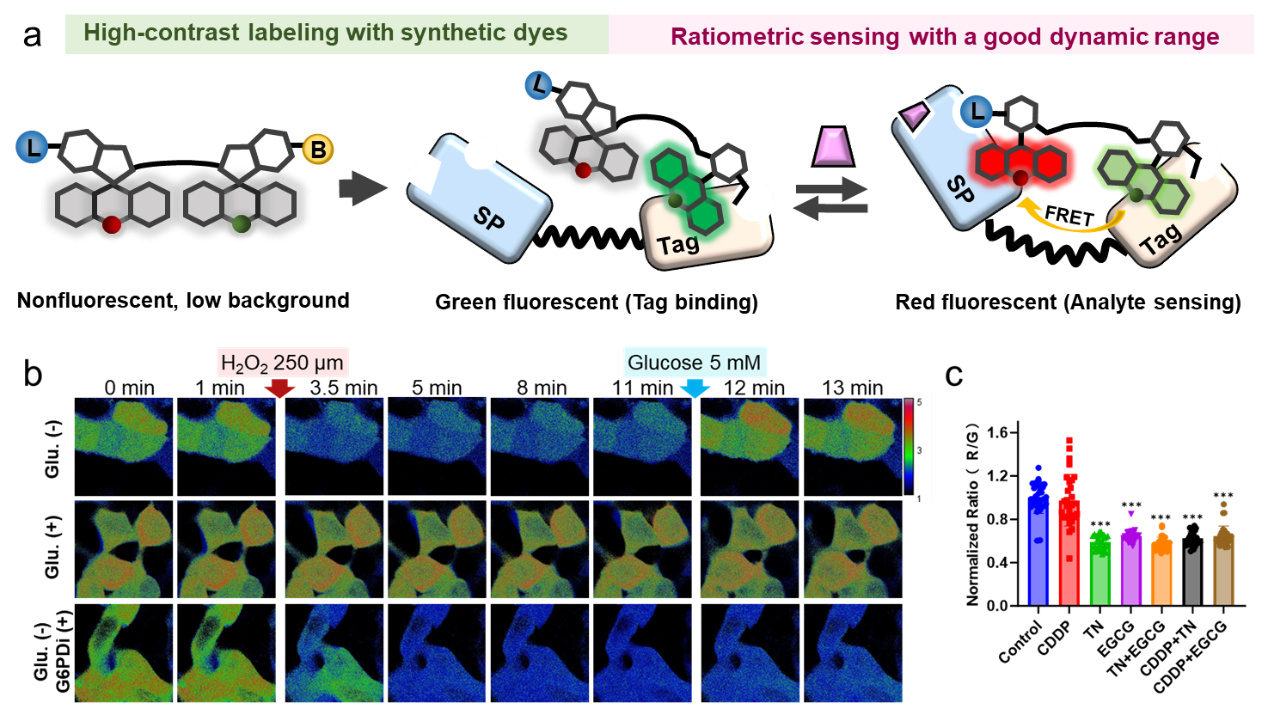
Dr Wang’s group at School of Pharmacy, Fudan University, has recently developed a chemigenetic probe designed for monitoring NADPH dynamics in living cells. The research article was published in Journal of the American Chemical Society titled "Fluorogenic rhodamine-based chemigenetic biosensor for monitoring cellular NADPH dynamics."

NADPH is a crucial coenzyme in biological systems, essential for regulating anabolic reactions and maintaining redox balance under both physiological and pathological conditions. However, due to its complex structure and similarities with other metabolic molecules like NADP+ and NADH, real-time monitoring of NADPH dynamics in living cells has been challenging.
In this study, Dr Wang’s group developed a chemigenetic biosensor named FOCS (Fluorogenic rhOdamine-based Chemigenetic bioSensor), based on a protein-responsive dye system. The FOCS probe consists of a small-molecule chemical sensor and a recognition protein tag. The small-molecule probe is composed of a green donor dye and a red acceptor dye. Upon binding to the protein tag, the probe emits green fluorescence. NADPH facilitates the interaction between the small-molecule probe and the recognition protein, leading to the emission of red fluorescence. By measuring the red/green fluorescence ratio, NADPH can be detected in a ratiometric manner. This probe enables rapid, specific, and reversible detection of NADPH, without interference from other metabolic molecules (such as NADH, NADP+, ATP, etc.) or pH fluctuations. In live-cell imaging of tumors, this probe can dynamically monitor fluctuations in NADPH concentration under oxidative stress conditions, shedding light on the role of the pentose phosphate pathway in regulating NADPH homeostasis within tumor cells. Additionally, the probe can be used to monitor NADPH levels in response to drugs like cisplatin, thionicotinamide, and epigallocatechin gallate, providing a visual tool for the screening and mechanistic study of anti-tumor drug combinations.

Figure 1 Monitoring of NADPH dynamics in living cells by Chemigenetic biosensor FOCS-NADPH
Professor Lu Wang of Fudan University, Professor Kai Johnsson of the Max Planck Institute in Germany, and Professor Pinghong Zhou of Zhongshan Hospital, Fudan University are the corresponding authors of this paper. The co-first authors are Huimin Chang, a doctoral candidate at School of Pharmacy, Fudan University; Dr. Simon Clemens from the Max Planck Institute; Professor Pingting Gao and Professor Quanlin Li from Zhongshan Hospital, Fudan University. This work was supported by the National Natural Science Foundation of China, Zhongshan Hospital, Basic Research Special Zone Plan of Shanghai, and the Max Planck Society.